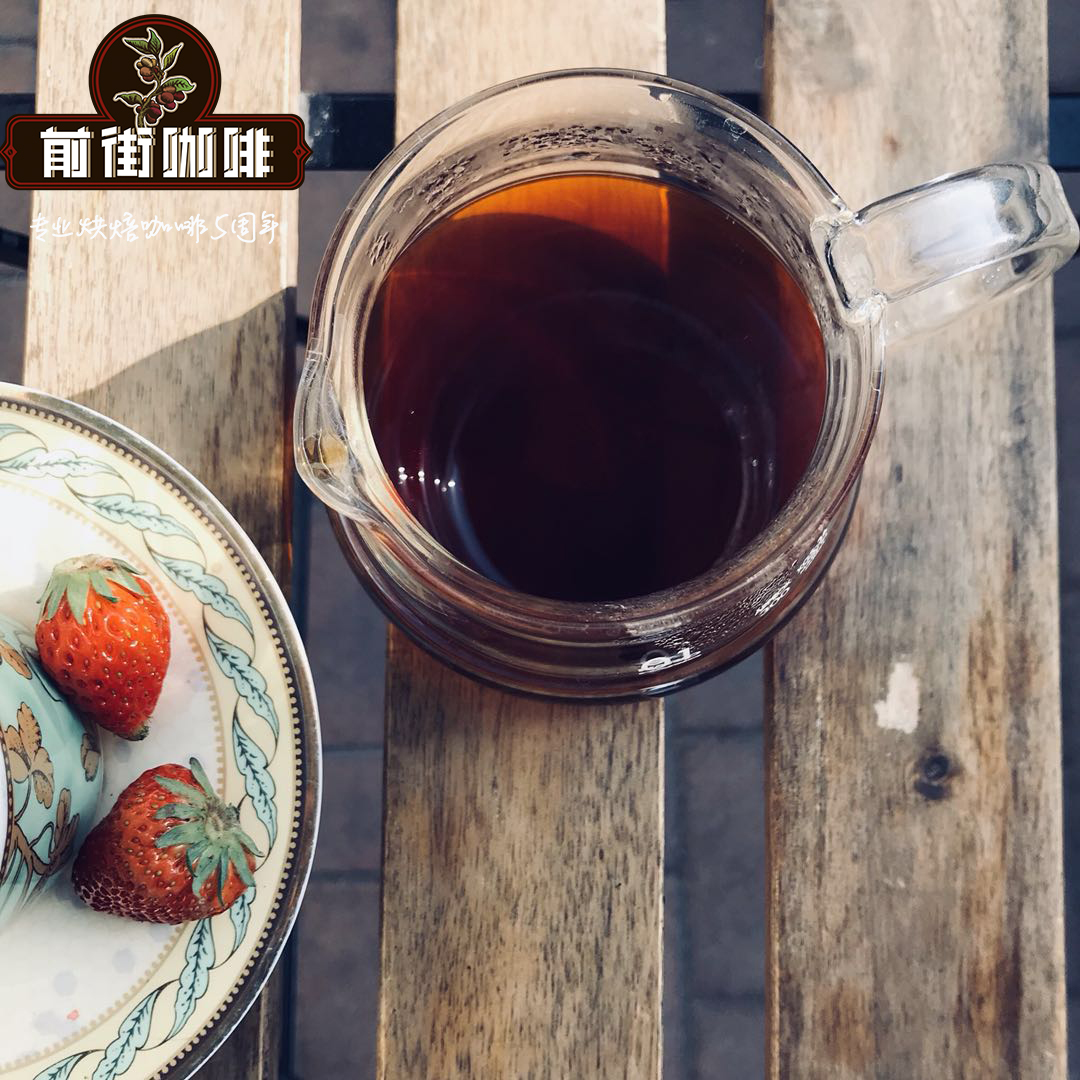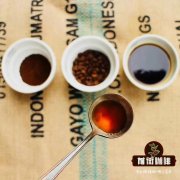Introduction of Coffee varieties in the World Coffee characteristics of the world's boutique coffee producing areas
Professional coffee knowledge exchange more coffee bean information please follow the coffee workshop (Wechat official account cafe_style)
Low acidity, low bitterness, mellow taste and strong aroma
The beans in this series are mainly Asian beans. Brazil in the Americas is the largest coffee producer, but it is also included in this category because of its slightly monotonous taste. The typical Asian bean and island flavor features that the alcohol thickness is higher than that of Central and South American beans and African beans, but the sour taste is lower, with slightly sunken wood, herbs, spices and earthy flavor, and the low stuffy aroma is higher than the rising sour flavor. Island beans are relatively light and gentle, with a light and elegant tone. When it comes to Asian coffee, the first impression of coffee lovers is often calm and calm. It is precisely because of the heavy nature of Asian coffee that it is very suitable to be used as a base when making Italian coffee. The raw coffee beans in Asia are generally processed by wet or semi-wet process. most of the raw beans are uniform, but the color of the beans treated by semi-wet method is darker. Asian coffee is generally characterized by thick flavor, strong sweetness and round taste, but slightly flat aroma and brightness.
1. Indonesia: moderate bitterness, traditional Chinese medicine and earthy aroma, chocolate, sweet syrup, mellow taste
Beans: Java (Java), Mandheling (Manning), Ankola (Ankora), Kopi Luwak (civet coffee)
Coffee is produced throughout Indonesia, and Java occupies an extremely important position in the history of coffee. Indonesia is the world's leading producer of robusta coffee, producing 6.8 million bags of coffee a year, with most of the coffee coming from small plantations, accounting for about 90 per cent of the total output. The best growing areas of the archipelago are in Java, Sumatra, Sulawesi and Flores.
Java produces exquisite aromatic coffee with relatively low acidity, delicate taste and good balance. Java coffee has a better aroma and acidity than coffee from Sumatra and Sulawesi. The best plantations in Java are Brawan, James Bitt, Cayumas and Pankur. Java mocha is a mixture of Java coffee and Yemeni mocha coffee.
The coffee in Sumatra, the second largest island in the Indonesian archipelago, is even more eye-catching, similar to Java coffee, but with slightly heavier grains. Coffee beans from Mandheling and Ankola have also received a lot of attention, and the former is even known as the world's fullest coffee beans.
The island of Sulawesi, located between Borneo and New Guinea, is sometimes called Celebes. The coffee produced on the island is full-grained and full-scented, and the best coffee beans come from Kalosi and rand buns in the south of the island.
One of the main coffee producers in New Guinea is the Siegel Plantation, whose products are the same as the overall style of archipelago coffee, full of particles and well balanced.
On the whole, Indonesian coffee has a strong taste, mellow taste, slightly syrup flavor, excellent acidity, slightly similar to traditional Chinese medicine and clay taste. Its two main export markets are Germany and Japan, which reflects the excellent quality of the coffee. What attracts consumers is the unique quality of its Arabica coffee beans. Indonesian coffee is divided into six grades, the best of which is AP.
In particular, there is a special animal in the Indonesian mountains called civets (there are some captive civets in Taiwan and Yunnan at present), because it makes Indonesia produce almost the most expensive coffee in the world-Kopi Luwak. This kind of cat likes to eat coffee berries, and hard coffee beans are eventually excreted because they are indigestible. During the period of passing through the digestive tract, coffee beans are fermented to produce a unique and complex flavor, which makes many gluttons like this kind of coffee with special aroma. However, because the production is very small (the real wild musk Kopi Luwak is only dozens to hundreds of kilograms a year), it is sold at a high price, which is in the hundreds of dollars per pound. Also because of the limelight, IVY saw N more civets' signature coffee at the Guangzhou Coffee Expo in December 2014, mainly from Indonesia and Vietnam, but most of them were captive civets, and the sample quantity on the spot was several times that of the real civets.
two。 China: moderate sour taste, mellow aroma
Mainland bean species: Yunnan coffee, Hainan coffee; Taiwan bean species: national surname coffee, Gukeng coffee, Zhongpu coffee, Dongshan coffee, Dawushan coffee, Alishan coffee (Zou coffee), Mizuho coffee (Hualien), Jiufen Ershan coffee, Chiayi Ruili Huojinju coffee
The typical representative of Chinese mainland is Yunnan small grain coffee. Yunnan mainly grows two classic high-quality coffee varieties, Typica and Bourbon, and in 1991, the Katimo Catimor series (stronger anti-virus ability and higher yield) was introduced from Kenya, which is a variety of Arabian species (also known as small grain species). Yunnan small-grain coffee growing area is mainly distributed in Lincang, Baoshan, Simao, Xishuangbanna, Dehong and other prefectures. It is mostly planted in the mountains with an elevation of 800m to 1800m, and is mainly processed by Colombian wet processing, so it has a moderate sour taste and a rich and mellow aroma.
3. Brazil: low acidity, light sweetness, neutral mellow, single taste
Bean species: Santos, Bahia, Cerrado, Mogiana
Brazil's coffee quality is average but less excellent quality coffee, its beans are soft, the roasting process is obviously not resistant to heat, each variety is more famous for Santos, is named after its export port Santos / Santos.
Brazilian coffee beans are neutral and have no outstanding advantages, but there are no obvious defects. This taste is mild and smooth, low acidity, moderate mellow, light sweetness, and can be tasted alone (though a bit more monotonous). But because it is so mild and common, Santos / Santos is suitable for ordinary baking and brewing in the most popular way. It is the best raw material for making Italian espresso and all kinds of fancy coffee.
4. Ecuador: neutral flavor, alcohol neutral
Beans: Galapagos (Gala á pagos), Higant (Gigante)
Ecuador is the highest Arabica coffee plantation in the world. In fact, Ecuador means "equator" in Spanish. Due to the use of old-fashioned traditional harvesting and handling methods, Ecuadorian coffee is not included in the list of boutique coffee, so it is generally rare and unfamiliar. Ecuador faces the Pacific Ocean, and near the equator, about 900km off its west coast, near the equator at 90 degrees west longitude, there is a Galapagos Island, also known as Cologne, which produces the famous Galapagos coffee. In order to protect the natural ecology, the Ecuadorian government has designated the archipelago as a national park and banned the use of chemical fertilizers, pesticides and other chemicals, so coffee in the Galapagos Islands is recognized as organic coffee. Galapagos Islands coffee flavor is more balanced and neutral, moderately mellow, with a little obvious but pleasant acidity, with a special aroma.
5. Venezuela: light, low acid
Beans: Montebello, Miramar, Granija, Ala Granija
One of the many plantations in Merida under the Andes belongs to the Pablo and Pulido families, an ancient farm that has been allowed to downsize. Since taking over the farm in the early 1980s, the Pulido family has grown new trees to expand the farm while harvesting coffee from existing bourbon trees.
Venezuelan coffee tastes different from other coffee in Latin America. It is delicious, light and less sour than traditional coffee, which makes it not only blended but also distinctive.
6. Nicaragua: good mellow, balanced taste, clear
Bean species: Jinotega, Nuevo Segovia
Nicaraguan coffee is mainly produced in the central and northern parts of the country, with shade planting as its characteristic, while coffee beans are washed and dried in the sun. Generally speaking, Nicaraguan coffee is less distinctive, so Nicaraguan beans are often used as mixed coffee or instant coffee.
But high-quality Nicaraguan beans such as Maragogipe (a tree with large coffee beans called elephant beans) are highly rated because they are well-balanced and do not have the distinct acidity that other Central American coffees often have, but have a clear taste and excellent aroma. This round and soft texture also makes it a unique show in the more moderate evaluation of Guatemalan coffee and is loved by many people.
7. Mexico: attractive aroma, mild acidity and aroma, mellow and smooth
Bean species: Coatepec, Huatusco, Orizaba, Maragogype, Tapanchula, Huixtla, Pluma Coixtepec, Liquidambar MS
Mexico is close to the north of the United States, and its coffee production ranks fourth in the world, mainly in the southeast adjacent to the Malavitte Nango Highlands in Guatemala. Mexican coffee beans have large particles, and the coffee produced is smooth, mellow and fragrant. Among them, the coffee beans produced by the giant elephant bean tree Maragogipe (also known as Maragogype) are not only three times larger than the average, but also famous for their mellow and round taste. The poverty of farmers has caused most coffee to grow in natural conditions, without the use of chemicals such as insecticides or fertilizers, resulting in high-quality coffee. Mexican coffee is light in color, strong in acidity, crisp and refreshing.
8. Haiti: rich flavor and mild taste
Bean species: Yukot selection (Yauco Selecto), Grand Larez Yuco coffee (Grand Lares Yauco)
Most of the coffee produced in Haiti is grown in a purely natural state, which is not intentional but the result of material shortages because farmers are too poor to buy fungicides, insecticides and fertilizers. The main coffee-growing area in Haiti is in the north of the country. Compared with other countries, Haitian coffee has more brands, grades and varieties. In Japan, Haitian coffee is mixed with Jamaican Blue Mountain Coffee, which makes Blue Mountain Coffee more intense. Haitian coffee has full grains, rich flavor, medium to low acidity and mild taste, which is especially suitable for brewing espresso.

Important Notice :
前街咖啡 FrontStreet Coffee has moved to new addredd:
FrontStreet Coffee Address: 315,Donghua East Road,GuangZhou
Tel:020 38364473
- Prev

Beans of World Fine Coffee introduction to the characteristics of World Fine Coffee
Professional coffee knowledge exchange more coffee bean information Please follow the coffee workshop (Wechat official account cafe_style) low sour, low bitter, mellow taste, rich aroma this series of beans are mainly Asian beans, although Brazil in the Americas is the largest coffee producer, it is also included in this category because of its slightly monotonous taste. The typical Asian bean and island flavor is characterized by medium alcohol thickness ratio.
- Next

Apart from the mocha pot for making coffee, what other suitable utensils are there?
Professional coffee knowledge exchange more coffee bean information please pay attention to the coffee workshop (Wechat official account cafe_style) the principle of the smart cup is similar to the French pressure pot, but also looks like a hand filter cup. When you put it on the cup, the lower piston automatically opens and the coffee liquid drips into the cup. Its advantage is that it is relatively simple to operate, and it is not as sensitive to water flow and time as a hand-flushing pot.
Related
- Beginners will see the "Coffee pull flower" guide!
- What is the difference between ice blog purified milk and ordinary milk coffee?
- Why is the Philippines the largest producer of crops in Liberia?
- For coffee extraction, should the fine powder be retained?
- How does extracted espresso fill pressed powder? How much strength does it take to press the powder?
- How to make jasmine cold extract coffee? Is the jasmine + latte good?
- Will this little toy really make the coffee taste better? How does Lily Drip affect coffee extraction?
- Will the action of slapping the filter cup also affect coffee extraction?
- What's the difference between powder-to-water ratio and powder-to-liquid ratio?
- What is the Ethiopian local species? What does it have to do with Heirloom native species?

